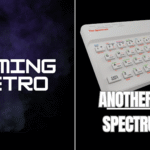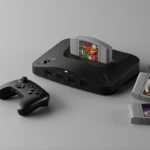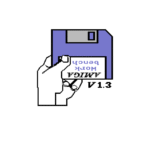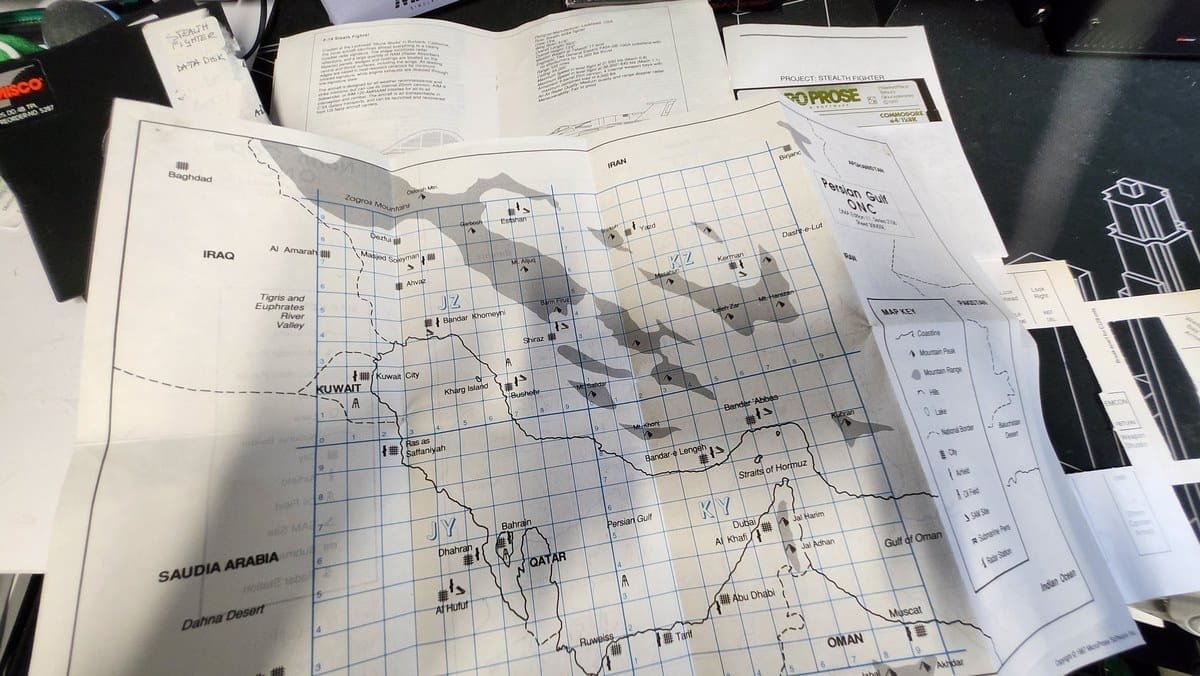One night, I risked everything (well, homework) to strike missile bases in the Middle East…
In the late 1980s and early 1990s, western activity in the Middle East was largely (a couple of conflicts aside) represented by airstrikes. Some of these might have been launched from F-15 jets, and others by what we called “stealth fighters.”
Despite going on its first combat mission in 1983, the existence of the Lockheed F-117 Nighthawk was not confirmed until 1988. Consequently, the rumoured plane – considered to be a fighter-bomber like the McDonnell Douglas F-4 Phantom II – was subject to considerable speculation. Did it look like a UFO? Half a Lockheed Blackbird (think the Clint Eastwood movie Firefox)?
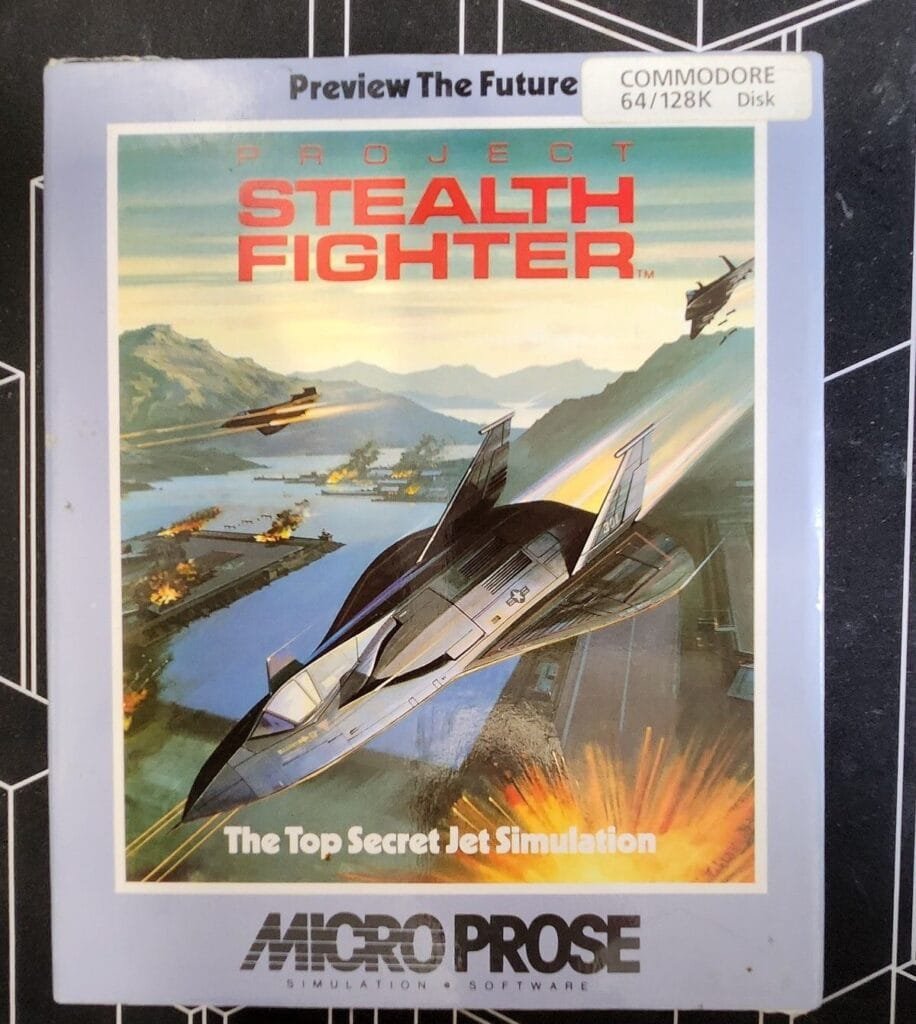
What eventually transpired was a plane that looked a bit like a flying wedge. It looked futuristic, but the magic was gone.
Night manoeuvres
A few months later, and I was unpacking the contents of MicroProse Project Stealth Fighter for the Commodore 64. I bought this with birthday money in late December 1990, having received a 1541-II disk drive for Christmas. I bought the game from CHIPs, a Teesside-based computer game shop with branches in Redcar, Middlesbrough, Stockton, and probably a few other places – all long since closed.
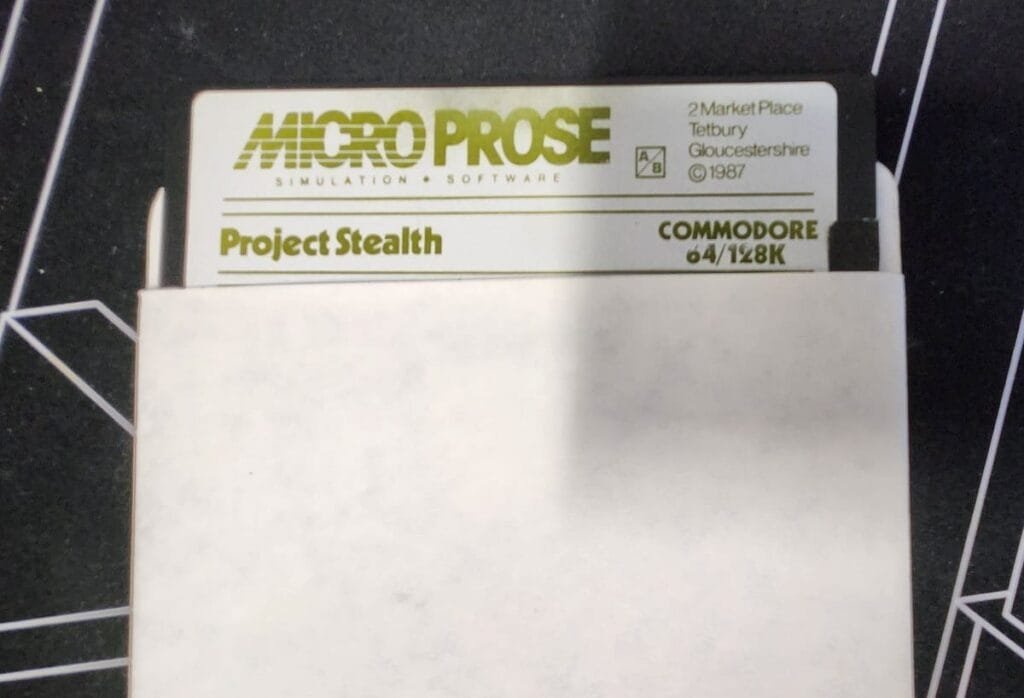
Unboxing the game when I got home, I couldn’t believe what was squeezed into the box. Thanks to a review in a then-3 year old copy of CU Amiga magazine, I knew that the game featured a keyboard overlay. But I wasn’t prepared for the manual and maps.
I don’t think I played the game until the next day, having spent the rest of the waking hours reading the manual! What I do know, however, is that after pouring over the maps and practicing with a few daytime missions, I took the night missions very seriously.
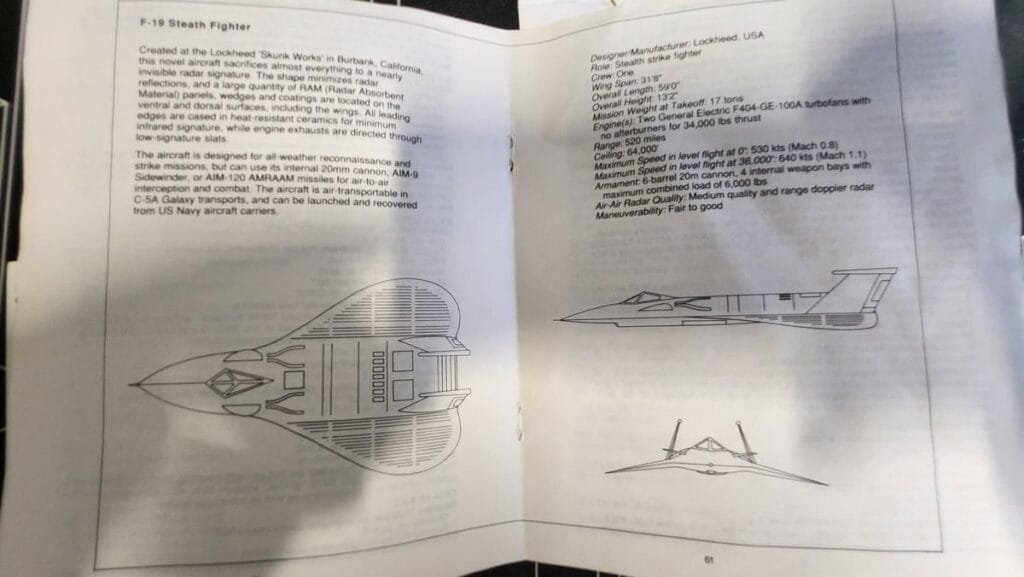
One evening in January 1991, I finished my tea (evening meal), and loaded up Project Stealth Fighter. As the game loaded, I grabbed a lamp, placed it on the computer desk, and switched off the lights.
I was about to commence my first night flight!
Of course, we’re talking 34 years ago, so I can’t quite recall how it went. But I do remember it seeming atmospheric, despite the slow speed of the game. I was told that the game runs quicker on the Commodore 128, but I don’t know how true this is. I do know that a successful strike made putting up with the slow refresh rate a lot easier.
From memory, my target was a runway or missile battery in Libya. Back when this game was published, Libya was a key anti-Israel player in the Meditterranean and Middle East region, and a thorn in the side for the USA. Airstrikes had been carried out by US forces in 1986.
Project Stealth Fighter was released in 1987.
Flights and airstrikes
My entire 20th century computing was punctuated with flight sims. MicroProse’s earlier Solo Flight was memorable on the C64, as were later Amiga (also PC) titles like F-15 Strike Eagle II. At one point, 25% of my Amiga library was combat flight sims.
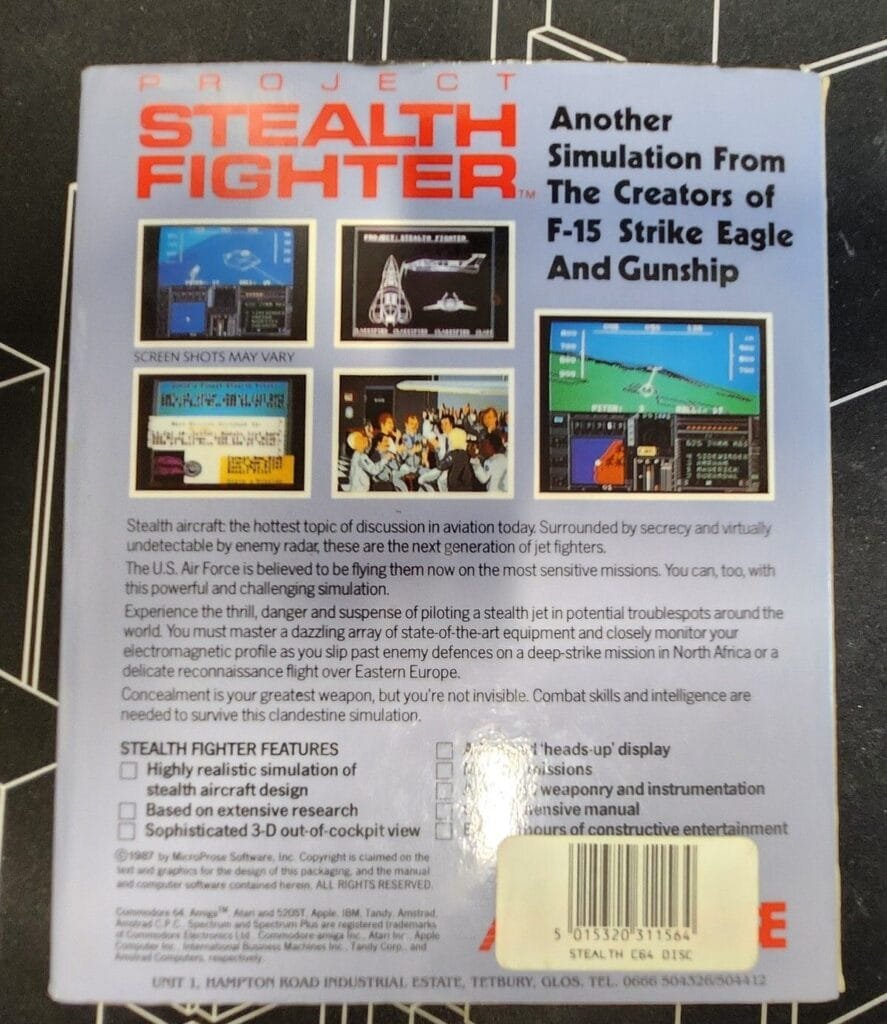
And then in 1998, I bought Microsoft’s Combat Flight Simulator for my dad’s Christmas present.
We probably glorified that impersonal nature of air combat and bombing back then. It seems odd looking back that what is essentially anonymous murder was turned into a video game.
On the other hand, military demand has underpinned and guided the development of technology for decades. This network you’re reading this newsletter on developed from a US Department of Defense project. Flight sims, first person shooters… they’re all used in military combat training.
They don’t pack boxes like that any more
Ethics and moral arguments aside, there is something amazing about digging out this game an examining the contents.
Four maps, two keyboard overlays (only one used), the original game disk, a 60-page manual (crediting Sid Meier as a playtester), a supplementary guide, and even space for me to squeeze in two data disks.
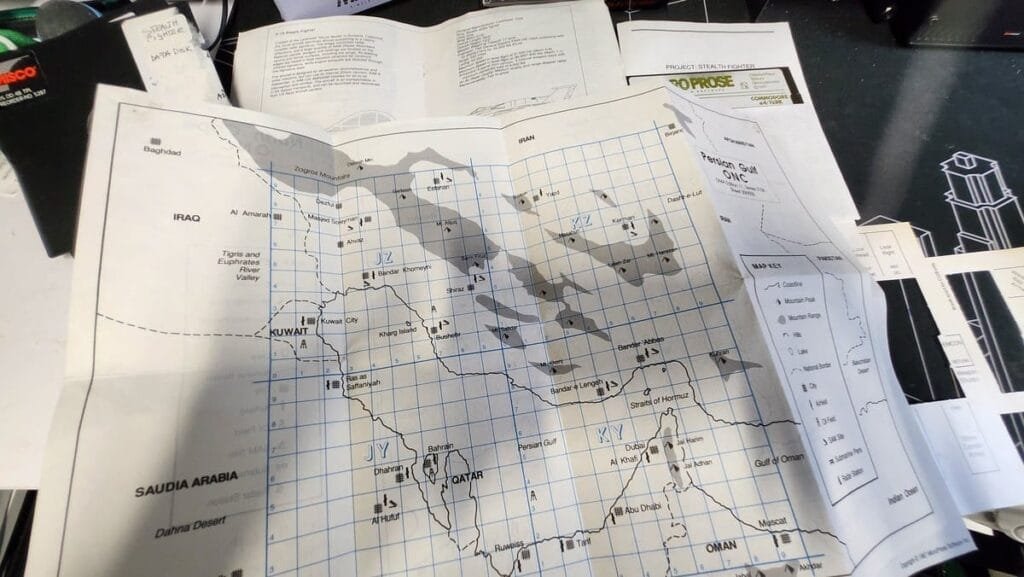
Seriously, when did you last see a game box so fully packed?
I haven’t had the chance to load the game and examine my progress as yet. Curiously, my career with the game was pretty short. By the summer of 1991, we’d progressed to an Amiga 500, bought by my dad with some redundancy pay. I later moved onto F19 Stealth Fighter, and later F-117A Nighthawk Stealth Fighter 2.0, both on the Amiga.
Both were good games, but neither had the same magic as the C64 game.
Affiliate Disclosure: Some of the links in this post may be affiliate links, which means I may earn a small commission if you make a purchase through those links. This comes at no extra cost to you. Thank you for your support!
Christian Cawley is the founder and editor of GamingRetro.co.uk, a website dedicated to classic and retro gaming. With over 20 years of experience writing for technology and gaming publications, he brings considerable expertise and a lifelong passion for interactive entertainment, particularly games from the 8-bit and 16-bit eras.
Christian has written for leading outlets including TechRadar, Computer Weekly, Linux Format, and MakeUseOf, where he also served as Deputy Editor.
When he’s not exploring vintage consoles or retro PCs, Christian enjoys building with LEGO, playing cigar box guitar, and experimenting in the kitchen.
